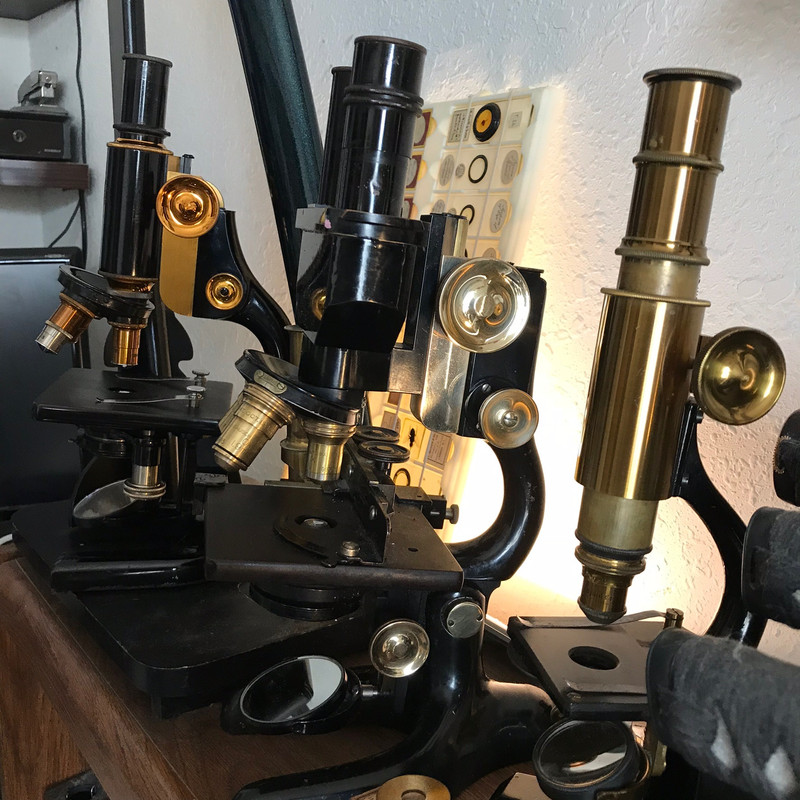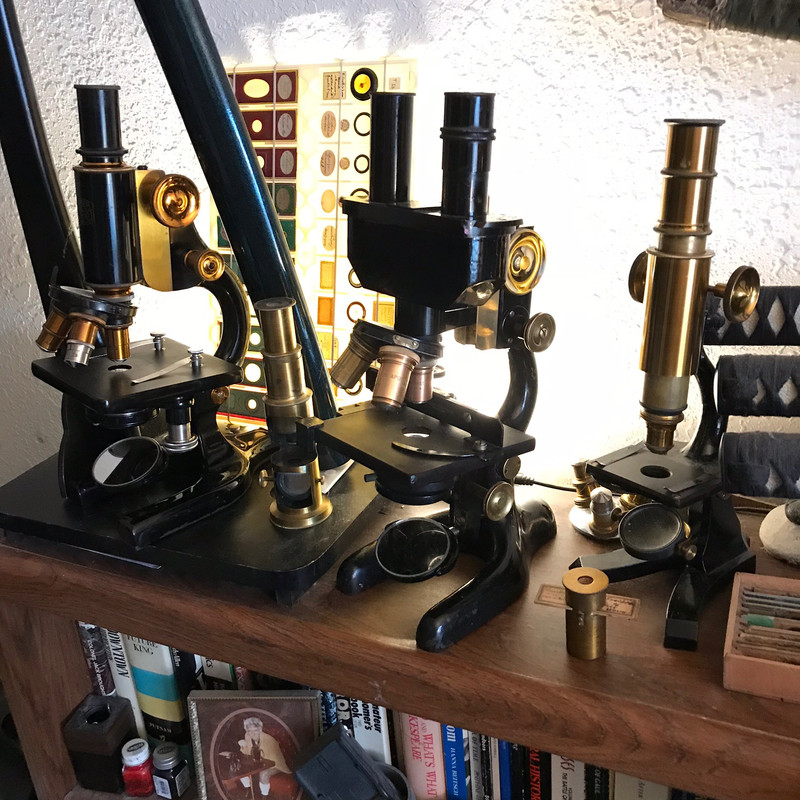Brasso
Posted: Wed May 30, 2018 11:47 pm
I just wanted to point out something some new collectors, like myself, may be unaware of.
The Spencer microscope on the left has a rich copper coating over the brass which is beautiful and cuts some of the glare.
The Bosch and Lomb binocular scope is a restoration. This one was in very bad shape, the paint on the prism housing was pulled off in chunks from people taping department labels and such and ripping them off. The prism cover had to be stripped, polished and painted. I had to buff the paint off with an emery tip on a rotary tool because B&L’s chemically resistant paint actually shrugged off xylene! (Always use eye protection, mask, and gloves outdoors. I use Canada balsam and so cannot get away from it, and I try to keep exposure limited.) But I digress.
The brass was so corroded it had black stains and pimples. I had to use Brasso to clean the stains, which brings me to the point of this post:
Brasso removes tarnish from brass, but it also quickly and efficiently dissolved the copper coating!
I also had to polish the pimples off the corse focus knobs with a soft tip on the rotary tool and red polish paste. This still left microscopic tool marks which made them look foggy. I hand polished them with diamond paste, followed by several coats of Renaissance Wax. Note the difference in reflective glare. And the naked brass surface will require more maintenance as it will tarnish more quickly

So in conclusion, never touch a copper coated brass microscope with any kind of brass polish.
The copper coating responds well to Renaissance Wax which is a micro crystalline metal polish.
Several coats rubbed on and off will make brass, chrome, rhodium, or black microscope paint really pop in the light.
I hope this saves someone some grief.
Radazz
The Spencer microscope on the left has a rich copper coating over the brass which is beautiful and cuts some of the glare.
The Bosch and Lomb binocular scope is a restoration. This one was in very bad shape, the paint on the prism housing was pulled off in chunks from people taping department labels and such and ripping them off. The prism cover had to be stripped, polished and painted. I had to buff the paint off with an emery tip on a rotary tool because B&L’s chemically resistant paint actually shrugged off xylene! (Always use eye protection, mask, and gloves outdoors. I use Canada balsam and so cannot get away from it, and I try to keep exposure limited.) But I digress.
The brass was so corroded it had black stains and pimples. I had to use Brasso to clean the stains, which brings me to the point of this post:
Brasso removes tarnish from brass, but it also quickly and efficiently dissolved the copper coating!
I also had to polish the pimples off the corse focus knobs with a soft tip on the rotary tool and red polish paste. This still left microscopic tool marks which made them look foggy. I hand polished them with diamond paste, followed by several coats of Renaissance Wax. Note the difference in reflective glare. And the naked brass surface will require more maintenance as it will tarnish more quickly

So in conclusion, never touch a copper coated brass microscope with any kind of brass polish.
The copper coating responds well to Renaissance Wax which is a micro crystalline metal polish.
Several coats rubbed on and off will make brass, chrome, rhodium, or black microscope paint really pop in the light.
I hope this saves someone some grief.
Radazz
